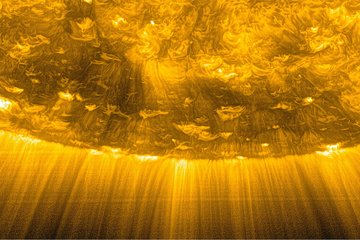All genres
1.
Journal Article
Multiple-spacecraft study of an extended magnetic structure in the solar wind. Journal Geophysical Research 114, A02108 (2009)
2.
Journal Article
A first step in reconstructing the solar corona self-consistently with a magnetohydrostatic model during solar activity minimum. Astronomy and Astrophysics 481, pp. 827 - 834 (2008)
3.
Journal Article
Magnetic Stereoscopy of Coronal Loops in NOAA 8891. Solar Physics 241, pp. 235 - 249 (2007)
4.
Journal Article
Optimization approach for the computation of magnetohydrostatic coronal equilibria in spherical geometry. Astronomy and Astrophysics 475, pp. 701 - 706 (2007)
5.
Thesis - PhD
Magnetic field extrapolation in the solar corona and observations of a flux rope in the solar wind. Dissertation, Georg-August-Universität Göttingen (2009)










